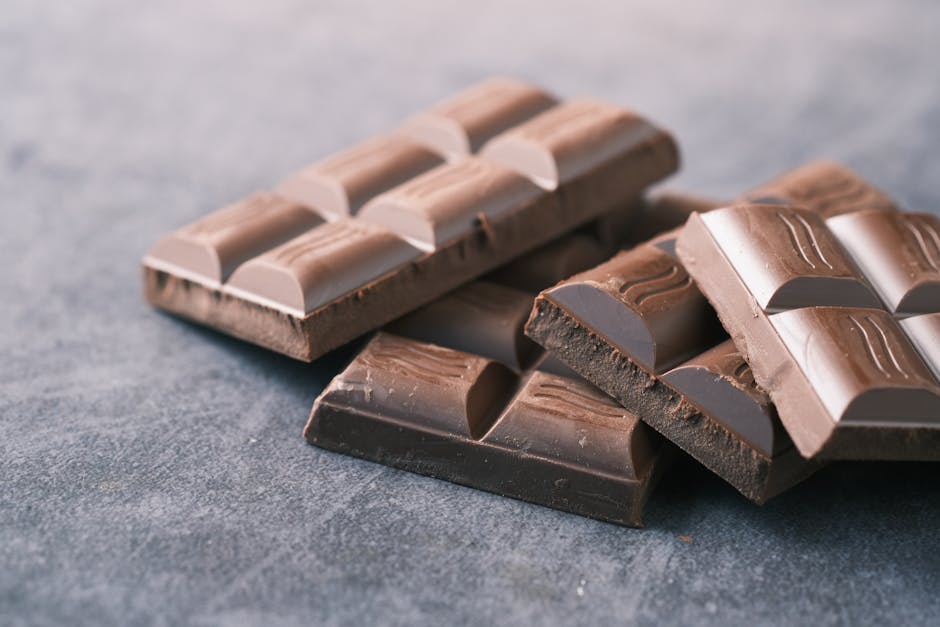Introduction to the World of Chocolate Bars
Chocolate bars, oh what a treat! But here’s a twist: not all chocolate bars taste the same, and it’s not just about the brand. The real secret? It’s where they come from. You see, chocolate doesn’t just magically appear. It starts as cacao beans, and these beans pick up unique flavors from their environment – a concept known as “terroir.” Just like wine, the soil, climate, and even the way the beans are treated play a huge role in the final taste of chocolate. So, when you bite into a chocolate bar, you’re not just enjoying a sweet snack; you’re experiencing flavors from around the world. Whether it’s the fruity notes from beans in Madagascar or the rich, earthy tones from Ecuador, each bar tells a story. And that’s what we’re diving into. Let’s embark on a journey to unravel how the origin of chocolate bars shapes their delicious and distinct flavors. Strap in, chocolate lovers, we’re exploring the globe, one chocolate bar at a time!
The Role of Origin in Chocolate Flavor Profiles
Chocolate doesn’t taste the same everywhere. The origin of the cocoa beans plays a huge role in the flavor profile of the chocolate bar you’re munching on. Imagine cocoa beans as grapes in wine; much like how the taste of wine can differ based on where the grapes grow, cocoa beans reflect the characteristics of the soil they spring from. This concept, known as terroir, is essential. Beans from Ghana might give you a strong, bold flavor, while those from Venezuela could taste subtly fruity. Ecuador? Expect a hint of floral. The process from bean to bar doesn’t change much, but the origin story of the beans adds a unique twist to each chocolate piece. It’s not just about the chocolate; it’s about the journey from soil to your palate.
Unwrapping the Types of Cocoa Beans
In the world of chocolate, it all starts with the cocoa bean. Think of cocoa beans like wine grapes – where they grow impacts their flavor big time. There are mainly three types of cocoa beans – Criollo, Forastero, and Trinitario. Criollo is the rarest and priciest because it’s tough to grow but has a complex, smooth flavor that’s a hit among chocolate connoisseurs. Forastero, on the other hand, is the hardy, heavy lifter of the cocoa world. It’s easier to grow, so it’s pretty much everywhere, giving off a stronger, more bitter taste. Then there’s Trinitario, a hybrid of Criollo and Forastero, stealing the spotlight with the best of both worlds – it’s got the robustness of Forastero and the refined taste of Criollo. So, when you’re biting into a chocolate bar, remember, it’s not just a treat; it’s a journey through the flavors shaped by the origin of its cocoa beans.
Terroir: How Soil and Climate Influence Chocolate Bars
Chocolate doesn’t just come from a candy bar; it starts its journey from the cacao tree, and here’s a nugget of knowledge: where that tree grows makes a world of difference to your chocolate bar. This concept, known as terroir, is the idea that the environment—soil, climate, and topography—where the cacao is grown, imparts unique flavors to the chocolate. Just like wine grapes, the taste of cacao beans reflects their growing conditions.
If a cacao tree is basking in the sunshine of Ghana, expect your chocolate bar to have a robust, perhaps slightly earthy flavor. In contrast, beans from the shade-drenched forests of Ecuador might give off a more complex, fruity vibe. The reason? It’s all about the soil and the weather. Rich, nutrient-packed soil and the right amount of rainfall equate to happier cacao trees, producing beans full of distinctive flavors. Too much rain, though, and you risk bland beans due to dilution of flavors, while too little can stress the tree, concentrating its flavors but reducing yield.
So, next time you savor a piece of chocolate, think about the journey it’s been on. From the specific plot of land where its cacao trees flourished to the meticulous process that turned them into the delicious bar in your hand, it’s a global adventure wrapped in foil. Remember, when you taste chocolate, you’re not just tasting a sweet treat; you’re experiencing a piece of the earth it came from.
From Bean to Bar: The Chocolate Making Process
The making of chocolate is a journey that starts with a single cocoa bean and ends in the delicious bar we all love. First, farmers harvest cocoa beans from pods on cacao trees, found mainly in tropical regions around the Equator. Next comes the fermentation process, where beans are left in heaps, bins, or baskets for several days to develop their flavors. After fermenting, beans are dried in the sun, a step crucial for reducing moisture without losing those developed flavors.
Once dried, the beans are shipped to manufacturers where they’re roasted, a phase where most of the distinct chocolate flavor we recognize comes to life. After roasting, the beans are cracked open to extract the cocoa nibs, discarding the shell. These nibs are then ground into cocoa liquor, a paste that’s the base of all chocolate products. Depending on the desired chocolate type, manufacturers mix cocoa liquor with cocoa butter and sugar, and for milk chocolate, milk powder is added. The concoction is then conched, where it’s continuously mixed and aerated to develop flavor and texture. Finally, the chocolate is tempered, molded into bars, and cooled to solidify.
Each step, from the bean selection, fermentation, and roasting method, to the final conching and tempering, influences the chocolate’s flavor profile. So, when you taste a chocolate bar, you’re experiencing the culmination of a meticulously crafted process.
Tasting Guide: Identifying Flavors in Chocolate Bars
When tasting chocolate bars, think like a wine connoisseur. Start by looking at the chocolate; good quality chocolate should have a glossy shine and smooth texture. Next, snap a piece off. A crisp, clean break indicates a well-tempered chocolate. Now, smell the chocolate. This prepares your palate and lets you identify initial aromas. Is it fruity, floral, earthy, or perhaps nutty?
Next, place a small piece on your tongue but don’t chew it immediately. Let it melt. As the chocolate melts, it releases its flavors. Pay attention to how it evolves. Early flavors might be bold, like berries or citrus, transitioning to softer notes, like tea or spices. Finally, consider the aftertaste. High-quality chocolate leaves a pleasant flavor that lingers, while poor-quality chocolate might taste flat or overly sweet after a moment.
Remember, the origin of the cacao bean affects the flavor profile. Beans from Madagascar might have a fruity essence, while Venezuelan chocolate often has nutty or floral notes. The key is to slow down, really taste, and enjoy the distinct flavors each chocolate bar offers.
Popular Chocolate Bar Origins and Their Unique Flavors
Chocolate bars don’t taste the same, and it’s all about where their cocoa beans come from. Let’s dive into some popular chocolate bar origins and how they shape the unique flavors we love. Ghana is big on cocoa, producing rich and full-bodied chocolate that’s intensely flavorful. These bars often have a robust, earthy flavor that’s unmistakably bold. Then there’s Ecuador. Chocolate from this region can surprise you with its floral and fruity hints, making each bite a complex experience. It’s like a bouquet of flavors in your mouth. Moving over to the Ivory Coast, the chocolate here tends to have a strong cocoa taste that’s slightly bitter but incredibly deep and satisfying. It’s straightforward, no-fuss chocolate that gets right to the point. Madagascar, on the other hand, is where things get really interesting. Chocolate bars with beans from this island are a riot of fruity notes, with tangy and sweet dancing around each other. It’s quite the flavor adventure, perfect for when you want something out of the ordinary. So, next time you pick up a chocolate bar, take a moment to check where its cocoa beans were sourced from. You might discover a world of flavors you never knew existed.
The Impact of Farming Practices on Chocolate Flavor
Farming practices play a big role in how your chocolate tastes. Picture this: two farms, both growing cocoa beans, but one uses lots of chemicals and cuts corners, while the other takes care of their land and uses no nasty stuff. The chocolate made from these farms? They’re going to taste different. The farm that treats the land well usually produces beans with richer, more complex flavors. This is because the soil is healthier, and the beans pick up those good vibes. On the other hand, the other farm’s beans might taste flat or even a bit off. It’s all about how the farmers treat their crops. So, when you’re munching on a chocolate bar and notice it has a unique flavor, think about where it came from. That taste is not just about the cocoa itself; it’s about the farmer’s love and hard work.
Pairing and Enjoying Different Origin Chocolate Bars
When you dive into the world of chocolate bars from different origins, you’ll notice each region brings its unique flavors to the table. To truly appreciate these, pairing them with the right foods and drinks enhances the experience. Starting simple, dark chocolate bars with a high cocoa content from South America, known for their nutty and fruity undertones, marry well with a good cup of black coffee or a robust red wine. This combo brings out the depth in both the chocolate and your drink. On the flip side, African chocolates, often with a strong, earthy flavor, pair nicely with a sweeter white wine or even a light beer, balancing out the intensity. If you’re indulging in a milk chocolate bar from Europe, known for their creamy and smooth textures, try it with a cup of Earl Grey tea. The bergamot in the tea complements the sweetness of the chocolate, creating a soothing palate experience. No matter the origin, remember, the best way to enjoy chocolate is to take it slow. Let it melt in your mouth, savor the distinct flavors, and see how they change when paired with different beverages. It’s not just eating chocolate; it’s an adventure.
Conclusion: The Sweet Journey of Chocolate Exploration
Exploring the world of chocolate is like embarking on a global journey, right from the comfort of your own home. Every bar tells a story of its origin, from the soil it grew in to the hands that crafted it. The flavor of chocolate is not just about the sweetness or the bitterness; it’s about experiencing the essence of its birthplace. Whether it’s the fruity notes from Madagascar, the earthy tones of Ecuador, or the rich depth of Ghanaian beans, each bar offers a unique glimpse into the heart of its homeland. Remember, the next time you savor a piece of chocolate, you’re not just indulging in a treat; you’re discovering a world of flavors shaped by geography, climate, and care. Embrace the sweet journey of chocolate exploration, and let your taste buds be your guide.








